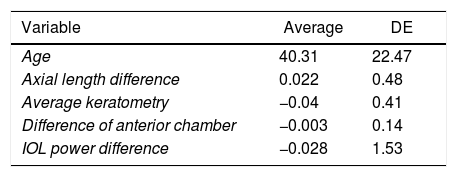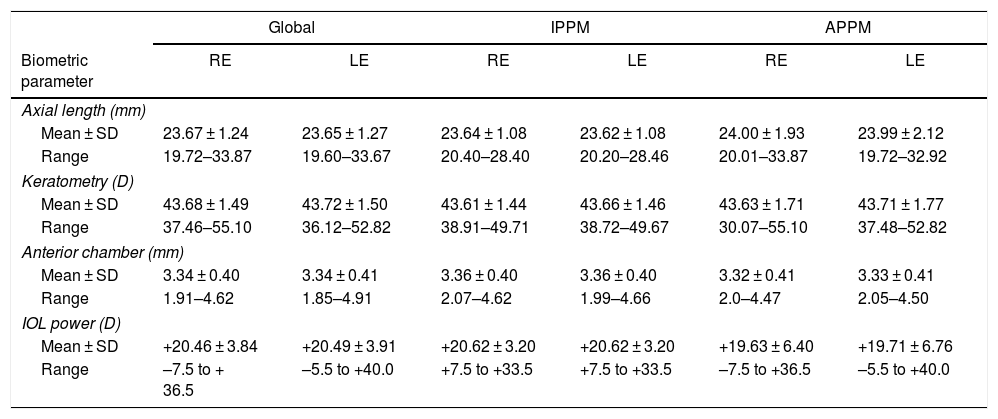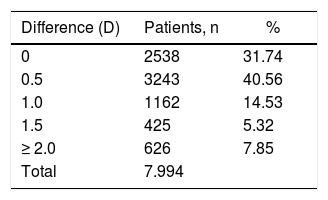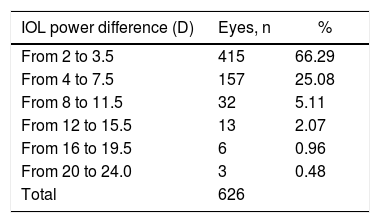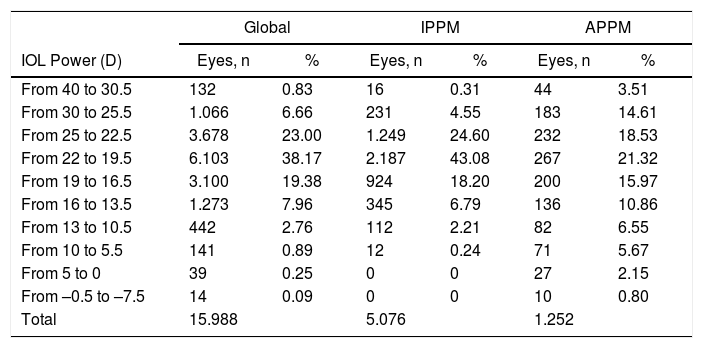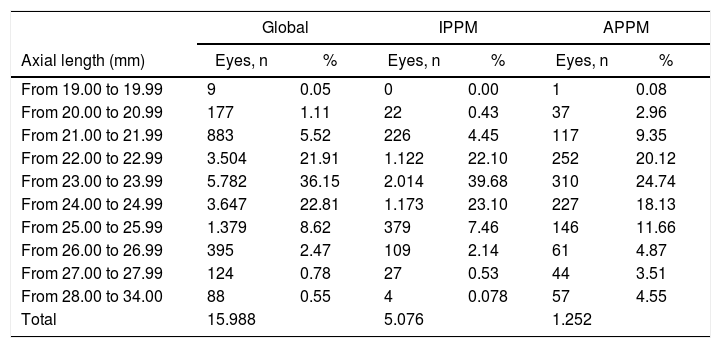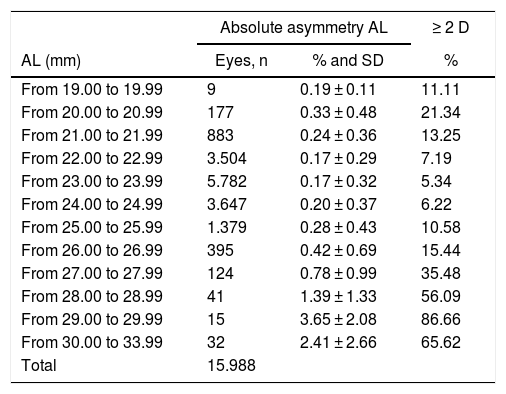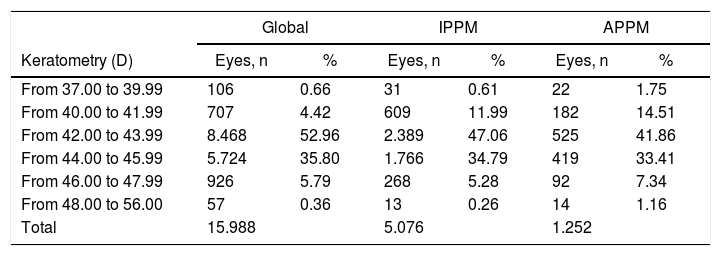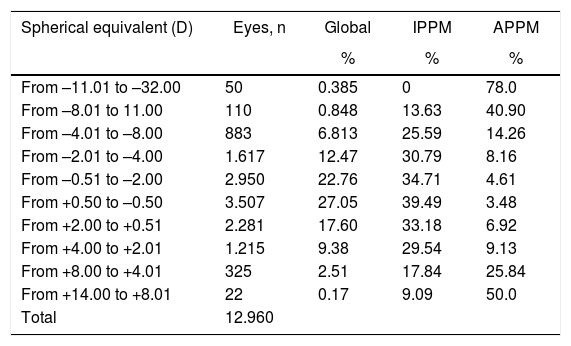To analyse the distribution of the difference between both eyes in the calculation of the dioptric power of the intraocular lens in a series of 7994 patients and the biometric variables that determine it.
MethodsThe data of patients between 3 and 99 years old, residents of the city of Guayaquil and neighbouring sites, who received ocular biometry by partial optical coherence interferometry between 2004 and 2020 were reviewed. Ocular biometrics, including axial length (AL), anterior chamber depth (ACD), and the mean corneal dioptre power (CD), were measured by partial coherence interferometry. Refraction without or with cycloplegia was recorded in spherical equivalent (SE). The Haigis formula from the IOL Master instrument was used to calculate the dioptric power of the intraocular lens in both eyes.
ResultsData from the bilateral optical biometry of 7994 patients were analysed. The mean and standard deviation of AL, CD, ACD and dioptre power of the IOL were 23.66 ± 1.25, 43.70 ± 1.49, 3.34 ± 0.40 and +20.46 ± 3.84, respectively. 2538 (31.7%) patients had equal dioptre power of the IOL between both eyes. 3243 (40.6%) patients had a 0.50 D difference; 1162 (14.5%), 1.0 D; 425 (5.3%), 1.5 D. 626 patients (7.8%) had a difference in IOL dioptre of 2 D or more, with a maximum of 24 D. The asymmetry of AL between OU was ≥0.4 mm in 10.49%, while that of CD reached ≥1 D in 1.9%.
Conclusions92.16% of patients had a difference within 1.5 D between both eyes in the calculation of the dioptre power of the intraocular lens. In case an eye is programmed in which it is impossible to perform a reliable biometry, either due to trauma or due to white or brunescent cataract, the calculation of the intraocular lens could be done taking as a reference the biometry of the contralateral eye.
Analizar la distribución de la diferencia entre ambos ojos en el cálculo del poder dióptrico del lente intraocular (LIO) en una serie de 7.994 pacientes y las variables biométricas que la determinan.
MétodosSe revisaron los datos de pacientes entre 3 y 99 años, residentes en la ciudad de Guayaquil y sitios aleda˜nos, que recibieron biometría ocular por interferometría de coherencia óptica parcial entre 2004 y 2020. La medición incluyó la longitud axial (LA), la profundidad de la cámara anterior (PCA) y la queratometría (Km) media. La refracción sin o con cicloplejia en dioptrías (D) fue registrada en equivalente esférico (EE). La fórmula de Haigis, incluida en el instrumento IOL Master, fue usada para realizar el cálculo del poder dióptrico del LIO en ambos ojos.
ResultadosSe analizaron los datos de la biometría óptica bilateral de 7.994 pacientes. El promedio y la desviación estándar de LA, Km, PCA y poder dióptrico del LIO fueron 23,66 ± 1,25, 43,70 ± 1,49, 3,34 ± 0,40 y +20,46 ± 3,84, respectivamente. Un total de 2.538 (31,7%) pacientes tuvieron igual poder dióptrico del LIO entre ambos ojos, y 3.243 (40,6%) pacientes tuvieron 0,50 D de diferencia; 1,162 pacientes (14,5%), 1,0 D; 425 pacientes (5,3%), 1,5 D; 626 pacientes (7,8%) tuvieron una diferencia en el poder dióptrico del LIO de ≥2 D, con un máximo de 24 D. La asimetría de la LA entre ambos ojos fue ≥0,4 mm en el 10,49%, mientras que el de la Km alcanzó ≥1 D en 1,9%.
ConclusionesEl 92,2% de los pacientes tuvieron una diferencia dentro de 1,5 D entre ambos ojos en el cálculo del poder dióptrico del LIO. En el caso de tratarse de un ojo en que resultara imposible realizar una biometría confiable, ya fuera por traumatismo o por catarata blanca o brunescente, el cálculo del LIO podría hacerse tomando como referencia la biometría del ojo contralateral.
Artículo
Comprando el artículo el PDF del mismo podrá ser descargado
Precio 19,34 €
Comprar ahora








